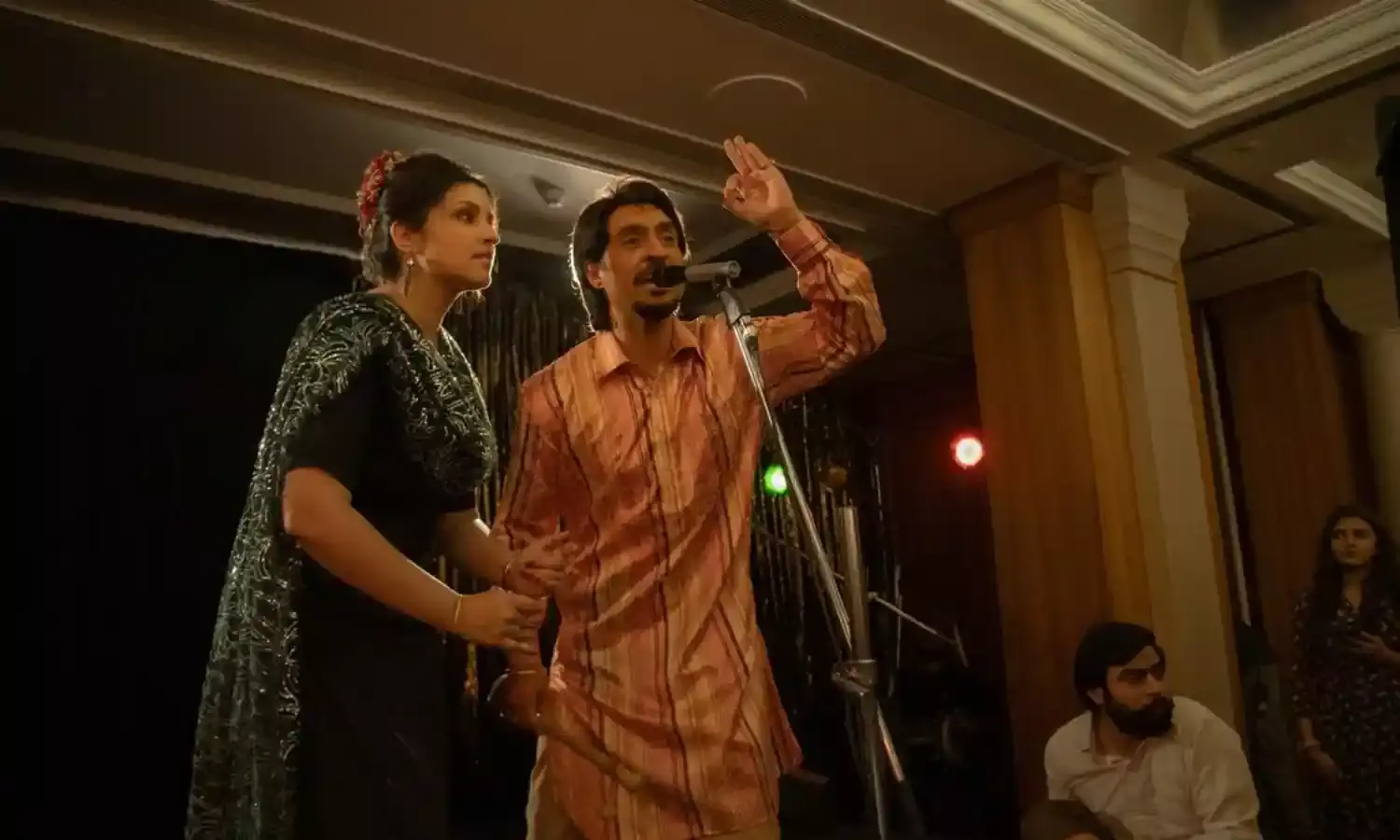Chamkila - Mainstream Celebration Of A Folk Legend
Imtiaz Ali’s film has introduced a legendary musician to a new audience;

Who was Amar Singh Chamkila? I had no clue till I heard of this film. Why? Because our general knowledge about regional Indian cultures is so myopic that we do not even care to find out about the music of states other than our own. And we wake up to our ignorance only when a director like Imtiaz Ali shakes us up with a film like ‘Amar Singh Chamkila’.
The same goes for Lalon Phokir, the ancient Baul musician from (now) Bangladesh. He died in 1890, and no one beyond Bengal may have even heard of him, till Gautam Ghosh made a feature film on this great composer, mystic poet, Baul singer, philosopher, spiritual leader, mystic and social reformer.
Even young Bengalis did not know about Lalon Phokir till Ghosh’s 2010 film on him called ‘Moner Manush’ was released. Looks like we would remain ignorant about folk music performers unless someone came forth to make a film on them.
Amar Singh Chamkila was the highest record-selling artist of his time. Born Dhanni Ram in 1960 into a Dalit Sikh Family, Chamkila found such unprecedented fame among the masses in Punjab which labelled him the tag of “the Elvis Presley of Punjab.”
But his death was so tragic that it still brings a lump to our throat specially because he was only 27. Till date, his murder has never been solved and remains a mystery.
In 2018, Kabir Singh Chowdhry made ‘Mehsampur’ which was a kind of a blend of the documentary and feature film which the director made as a different kind of stylistic tribute to Chamkila, so any comparison between these two films is futile. It is about a fictitious struggle of a filmmaker who wishes to make a film with the help of Chamkila’s original ‘dholakia’ (dhol or drum player) who was also shot but survived the firing and was hit in the thigh.
The film takes a circular route by beginning with the brutal killing of Chamkila, his wife and two accompanists. It tracks back to Chamkila’s boyhood, takes a zigzag route through his struggles through growth to fame and returns to the killing of the simple, talented young man and his young and talented wife Amarjot.
The film tracks Chamkila’s journey from when he worked in a factory that makes socks, lived in dire poverty and was hungry for a life in and through music. It highlights his fast-evolving musical identity, forever struggling between the polarised groups of massive fans who thronged his performances through the villages and small-towns of Punjab, and the groups who threatened him on his use of ‘vulgarities’ in the lyrics of his songs.
They commanded him to stop writing vulgar lyrics and switch over to singing devotional songs. Chamkila does it with equal success but his mass audience insistently demands him to go back to the raunchy numbers.
Chamkila’s popularity reaches far beyond Indian shores. He also falls in love with Amarjot without telling her that he already has a wife tucked away somewhere. They get married so that they can perform together all the time. However ‘the first-wife syndrome’ refuses to absolve Amarjot of her guilt of having wed an already married man.
Imtiaz Ali has innovatively created an innovative structure through which the narrative spills out. This is while Chamkila's young team members begin to narrate the story of his life to the DSP and his junior while Chamkila and Amarjot's bodies lie in another room, covered with blood-stained white sheets, waiting to be cremated.
These narrations are cut into with a parallel narration by Chamkila's associate who is sozzled and cut off from Chamkila, who fooled him by cutting him out of a Dubai tour.
Another innovative addition is Ali intercutting the visual narrative with real black-and-white stills of the original Chamkila, and allowing the graphics of some of Chamkila's original lyrics flash on the screen while the events go on in the backdrop.
Diljeet Singh in the title role is brilliant. Though his character is more fiction than reality and the story goes that he was not as simple, innocent and naive in real life as shown in this film.
Parineeti Chopra as Amarjot looks lovely and not only gives ideal histrionic support to Chamkila but also sings her own songs. The supporting cast is powerful enough to vest the film with a strength of its own.
The cinematography successfully invests the visuals with the bright colours of the Punjab. The lush green mantle of the green fields and the darkness of the socks mill contrasts richly with scenes of screaming crowds waiting for their musical hero. The art direction matches the cinematography ideally.
Amar Singh Chamkila is unabashedly a mainstream film without pretensions of not being so. Imtiaz Ali and his entire team have succeeded in giving us full blown entertainment without being apologetic about it.
The single scene of a guilt-ridden Chamkila's meeting with his sad first wife, and the subtle and low-key relationship of Chamkila with his very poor father are touching.
A.R. Rahman's musical score is quite loud in keeping with the demands of the musical genre but it is really sad that Rahman had to compose the music for the songs made famous by a Punjabi folk singer. On the other hand, Rahman, from the South, asked to create music for a film on a Punjabi folk hero as a composer-singer indicates the universality of music. Right?
But who killed Chamkila? His rival under whose guidance he began his music career? The religious fundamentalists whose command not to sing songs with bawdy lyrics? Or, the extremists who raged in Punjab during the mid-1980s which marked his death warrant? No one knows. No one probably will.

